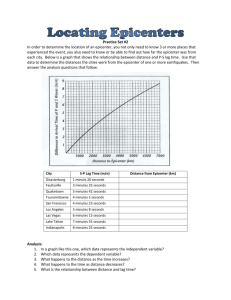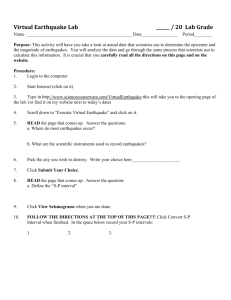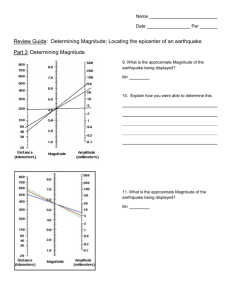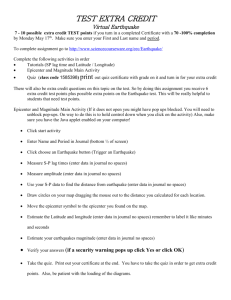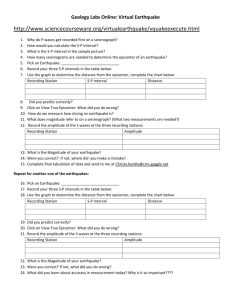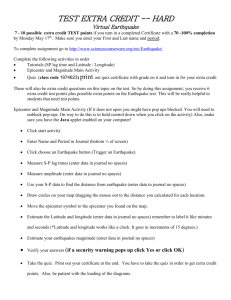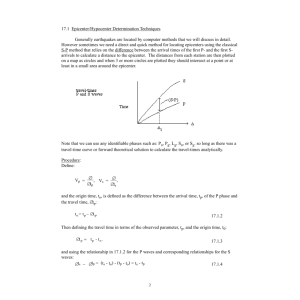Finding the Epicenter
advertisement
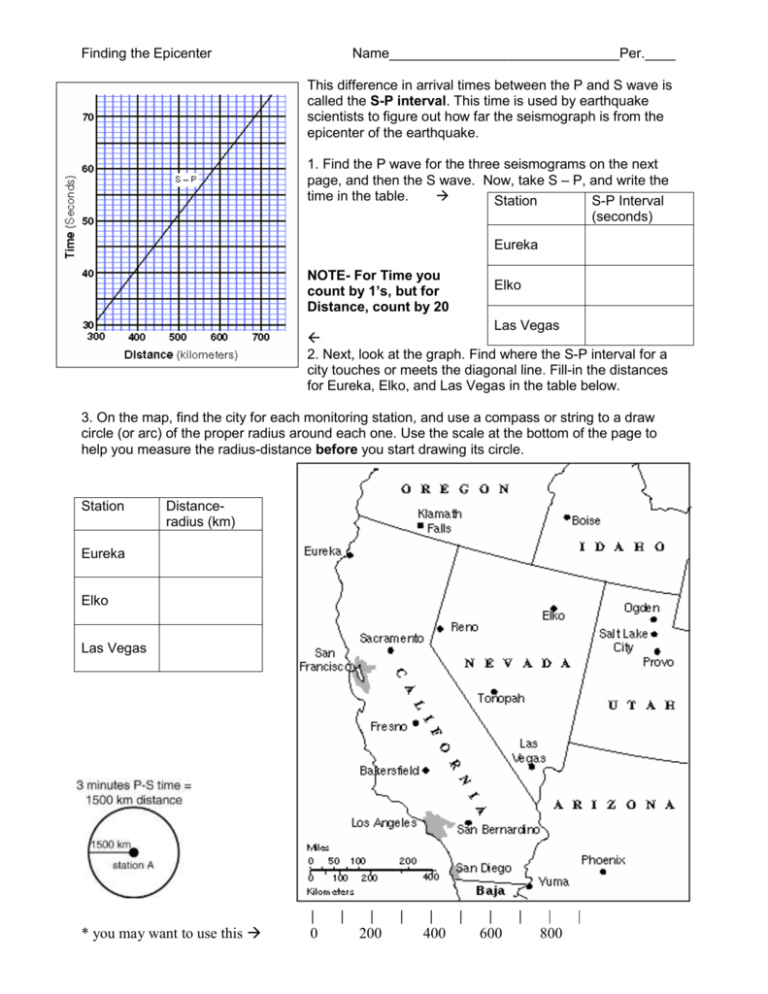
Finding the Epicenter Name______________________________Per.____ This difference in arrival times between the P and S wave is called the S-P interval. This time is used by earthquake scientists to figure out how far the seismograph is from the epicenter of the earthquake. 1. Find the P wave for the three seismograms on the next page, and then the S wave. Now, take S – P, and write the time in the table. Station S-P Interval (seconds) Eureka NOTE- For Time you count by 1’s, but for Distance, count by 20 Elko Las Vegas 2. Next, look at the graph. Find where the S-P interval for a city touches or meets the diagonal line. Fill-in the distances for Eureka, Elko, and Las Vegas in the table below. 3. On the map, find the city for each monitoring station, and use a compass or string to a draw circle (or arc) of the proper radius around each one. Use the scale at the bottom of the page to help you measure the radius-distance before you start drawing its circle. Station Distanceradius (km) Eureka Elko Las Vegas * you may want to use this | 0 | | 200 | | | 400 | 600 | | 800 | IMPORTANT NOTE- For each line count by 2 Eureka, CA Elko, NV Las Vegas, NV 4. After you have drawn all three circles, put an X on the map at a point near to where all three of the circles (or arcs) intersect or meet, to mark where you think the epicenter of the earthquake should be. 5. Which city on the map is the closest to the epicenter of the earthquake? 6. Why is it not possible to find the epicenter of an earthquake with only 1 or 2 seismographs? 7. Why do you think there could be a problem in getting an exact point for the epicenter? 8. Now repeat the same process to find the epicenter of a different earthquake, using the same process. Three more seismograms are located on the next page. Station S-P Interval (seconds) Distance (km) Pusan Tokyo Akita * you may want to use this | 0 | | | | | | | | | 200 400 600 800 | | | | | Pusan (South Korea) Tokyo (Japan) Akita (Japan)
